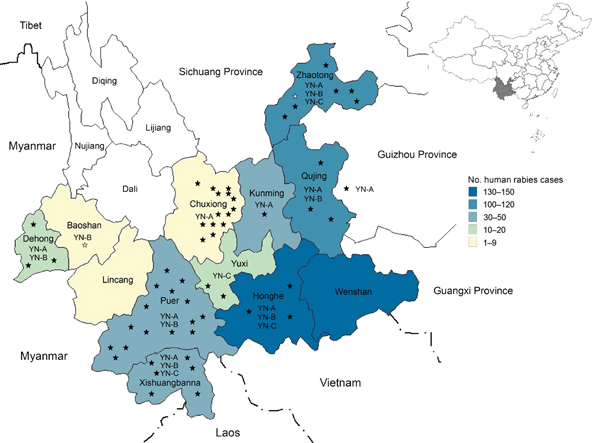Volume 20, Number 9—September 2014
Synopsis
Molecular Epidemiology of Reemergent Rabies in Yunnan Province, Southwestern China
Figure 1

Figure 1. Distribution of rabies cases, 2000–2012, and clades of rabies virus isolates, 2008–2012, Yunnan Province, China. Shown are the 16 prefectures in Yunnan Province. Black stars indicate 52 specimens collected in the present study. White stars indicate specimens obtained before the present study. YN-A, YN-B, and YN-C indicate clades identified in different prefectures.
1These authors contributed equally to this article.
Page created: August 13, 2014
Page updated: August 13, 2014
Page reviewed: August 13, 2014
The conclusions, findings, and opinions expressed by authors contributing to this journal do not necessarily reflect the official position of the U.S. Department of Health and Human Services, the Public Health Service, the Centers for Disease Control and Prevention, or the authors' affiliated institutions. Use of trade names is for identification only and does not imply endorsement by any of the groups named above.